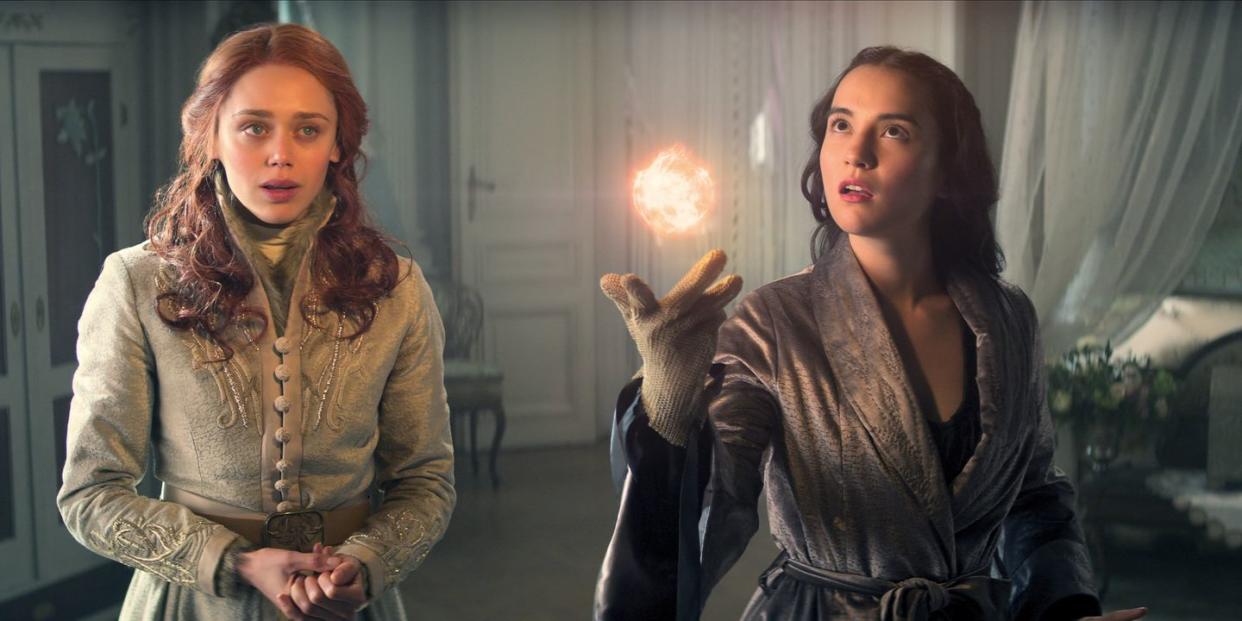Your Guide to the Types of Grisha on ‘Shadow and Bone’

- Oops!Something went wrong.Please try again later.
Obsessed with Shadow and Bone? Same. Still largely confused about all the powers floating around the Grishaverse? Also same. While Netflix’s adaptation of Leigh Bardugo’s book trilogy is, in a word, flawless (literally Game of Thrones who? Never heard of her), the show didn’t exactly come with a guidebook on the different kinds of Grisha—instead leaving it up to the viewer to figure out the differences in their unique powers (or rather, ability to manipulate matter) based on what played out onscreen. And trust! There are some major differences!
Grisha are divided into three groups: Corporalki (the Order of the Living and the Dead), Etherealki (the Order of the Summoners), and Materialki (the Order of the Fabrikators). And each of these groups has anywhere from two to three types of Grisha within them. Time to break it down with help from the show, the books, and, of course, the fan community on the Grishaverse Wiki:
Corporalki
Corporalki have powers that focus solely on the human body. Think: Nina helping Matthias keep warm under that fur blanket by speeding up his heart. 😅 This Order is divided into three subgroups:
Heartrenders
Heartrenders can literally speed/slow people’s hearts and also manipulate (and more specifically, damage) other organs that people need to survive. Delightful—but please be advised: Like all Grisha, they can’t use their powers when their hands aren’t able to touch. Heartrenders who appear in Shadow and Bone’s first season? Fedyor, Ivan, and, of course, Nina!
Healers
Basically the same vibe as Heartrenders, only instead of causing damage to the human body, they fix it. Healers can mend organs, cuts, bruises—you name it. Seems like a helpful skill to have, tbh.
Tailors
Kinda similar to Healers in that they can mend injuries like cuts and bruises, but for the most part, Tailors perform surface-level fixes to people’s appearances—like hair color, makeup, or the shape of one’s face. Alina’s friend turned traitor Genya Safin is a Tailor, and we see the extent of her abilities when she copies Alina’s entire face on her friend Marie.
Etherealki
Etherealki have powers tied to natural elements. Think: air, water, and, in the case of Alina, the literal sun. (Note: Alina and General Kirigan are both technically Summoners, but their powers are also seemingly one of a kind.) Etherealki are also divided into three subgroups:
Squallers
You know the Grisha who guide ships through the fold by manipulating wind? Those are Squallers! Zoya is perhaps the most noteworthy Squaller on the show, and her abilities allow her to essentially control the air pressure in a room—to the point where she can make objects (like all the papers in General Kirigan’s room) move.
Inferni
Like Squallers, but instead of air, they are able to essentially manipulate gas/fire. All they need is a spark to create an explosion, anytime, anyplace. FYI, Alina’s friend at the Little Palace, Marie, was an Inferni!
Tidemakers
This one is pretty obvious: Tidemakers control and manipulate water. They’re basically the Poseidon of Grisha.
Materialki
Materialki have powers tied to physical materials like metal and glass. There are only two subgroups, both of which are equally/delightfully nerdy:
Durasts
Durasts can manipulate anything solid—from stone to wood—and even move objects. A major character in Shadow and Bone ends up being a Durast, but it’s a SPOILER, ahem.
Alkemi
Like alchemists, Alkemi work with chemicals, poisons, and other ~science-y substances~. Think of them as chemists but with enhanced abilities!
You love all the deets on your fave shows? So do we! Let’s overanalyze them together.
You Might Also Like

